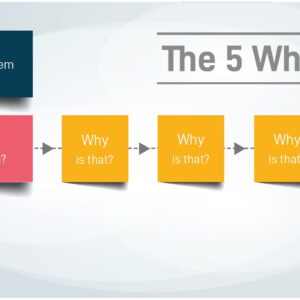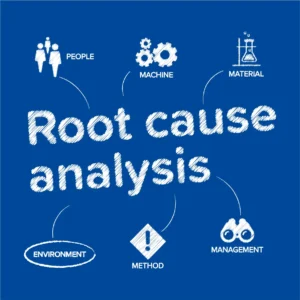The PDCA (Plan-Do-Check-Act) cycle is a tried-and-true methodology for continuous improvement, widely used across various industries to optimize processes, enhance efficiency, and ensure customer satisfaction. Whether in manufacturing or service industries, the PDCA cycle plays a crucial role in solving problems, improving quality, and driving innovation. Let’s explore real-world examples of how PDCA is applied in both manufacturing and service sectors.
What is PDCA?
Before diving into the examples, it’s important to understand the PDCA cycle itself. Developed by W. Edwards Deming, PDCA is a four-step process for continuous improvement:
- Plan: Identify and analyze the problem or opportunity. Develop a plan to solve the problem or improve the process.
- Do: Implement the plan on a small scale to test its effectiveness.
- Check: Evaluate the results of the implementation. Did it work? Were the expected outcomes achieved?
- Act: If the plan worked, implement it on a larger scale. If it didn’t, adjust the plan and repeat the cycle.
This cycle promotes ongoing improvement by continuously assessing and refining processes.
Real-World PDCA Examples in Manufacturing
1. Toyota Production System (TPS)
Toyota is one of the most well-known examples of PDCA in manufacturing. The company implemented the PDCA cycle as part of its Toyota Production System (TPS), which focuses on eliminating waste, improving quality, and ensuring efficiency. Here’s how PDCA is used in the TPS:
- Plan: Toyota starts by identifying areas for improvement, such as reducing the time it takes to assemble a vehicle or minimizing the number of defective parts.
- Do: The company tests small-scale changes in its production process, like adjusting the assembly line or introducing a new tool.
- Check: After implementing the change, Toyota evaluates whether it improved the desired outcome, such as reducing defects or speeding up production.
- Act: If the change is successful, Toyota scales it across the entire production line. If not, the cycle repeats until a successful solution is found.
This continuous PDCA cycle has allowed Toyota to remain a leader in the automotive industry, consistently improving its processes and maintaining high standards.
2. General Electric (GE)
General Electric, a multinational conglomerate, also embraces PDCA in its manufacturing processes. One example is its approach to enhancing the efficiency of manufacturing plants. When GE faces production delays or quality issues, it uses the PDCA cycle to address the root causes and find solutions.
- Plan: GE identifies specific manufacturing problems, such as frequent equipment failures or delays in production timelines.
- Do: GE might test new preventive maintenance strategies or new equipment technologies on a smaller part of the factory floor.
- Check: They monitor the results—has downtime decreased? Has production increased?
- Act: If the pilot test succeeds, the new strategies are implemented across the entire plant.
By continually refining processes with PDCA, GE ensures that its manufacturing operations are as efficient as possible.
3. Nestlé
Nestlé, a global food and beverage leader, applies PDCA to enhance the quality of its products and streamline its supply chain. For example, in its chocolate manufacturing process, Nestlé uses the PDCA cycle to ensure consistency in product quality and to reduce waste.
- Plan: The company plans to test new processes, such as using a different ingredient or adjusting the mixing time.
- Do: The new process is trialed in one factory with a small batch.
- Check: The results are carefully evaluated for taste consistency and production efficiency.
- Act: If the test batch meets quality standards, the new process is scaled up across other facilities.
This iterative approach helps Nestlé continuously improve its products, reduce waste, and meet consumer expectations.
Real-World PDCA Examples in Service Industries
1. McDonald’s: Service Speed and Quality Improvement
In the fast-food industry, where service speed and consistency are key to customer satisfaction, McDonald’s uses PDCA to maintain and improve its operational processes.
- Plan: McDonald’s may identify a decline in order fulfillment speed or customer satisfaction with food quality.
- Do: A pilot test is conducted, such as implementing a new ordering system or streamlining kitchen workflows.
- Check: The company monitors the results, evaluating whether the speed of service and food quality improve.
- Act: If the test proves successful, McDonald’s implements the changes across its entire network of restaurants.
Through the PDCA cycle, McDonald’s can continuously enhance its service quality, ensuring customers enjoy quick, high-quality meals.
2. Ritz-Carlton: Customer Service Excellence
Ritz-Carlton, known for its exceptional customer service, uses the PDCA cycle to improve guest experiences and operational efficiency. The hotel chain focuses on refining its processes to ensure each guest receives personalized and high-quality service.
- Plan: Ritz-Carlton may identify a potential issue in guest services, such as delays in check-in or insufficient room cleanliness.
- Do: The hotel tests new protocols, like implementing a more efficient check-in process or using a different cleaning schedule.
- Check: The results are assessed, such as guest satisfaction surveys or monitoring room turnover times.
- Act: If the new procedures lead to improvements, they are rolled out across the entire hotel chain.
By continually improving its processes with PDCA, Ritz-Carlton maintains its reputation as a leader in luxury customer service.
3. Airlines: Improving On-Time Performance
In the airline industry, on-time performance is crucial for customer satisfaction. Airlines like Delta use the PDCA cycle to analyze delays and develop solutions to improve punctuality.
- Plan: The airline identifies causes of delays, such as long boarding times or inefficient gate turnaround procedures.
- Do: The airline tests changes, such as streamlining boarding procedures or introducing more efficient aircraft maintenance protocols.
- Check: The results are evaluated, including tracking the number of delays and assessing customer satisfaction.
- Act: If the changes are effective, the airline implements them across its entire fleet.
Through this continuous improvement cycle, airlines can reduce delays, enhance customer satisfaction, and maintain operational efficiency.















